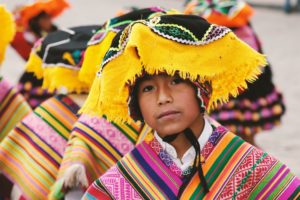Technology, Media & Culture
Examination of contemporary educational approaches to construct cultural understanding through analysis and analytics of media (e.g., advertising, television, film, digital data, primary sources) and through technology-supported teaching strategies for connecting with, collecting instances of, and reflecting on culture (e.g., global projects, mapping, locative media, AR/VR, photo exhibition, developing culturally-focused games/videos).
Technology, Media, and Culture offered an insightful, highly engaging, and informative impression of how culture is perceived through various lenses. We analyzed a variety of media sources to better understand how culture is presently represented and how it could be better represented. Additionally, we discovered various classroom strategies and technologies that were helpful in demonstrating cultural awareness and understanding, some of which are listed below. Of utmost importance, I discovered that recognizing a person’s cultural identity, values, and differences can be readily transferred to the classroom setting.
Defining Culture and Cultural-Historical Frameworks
Here, I applied Hofstede’s Six Cultural Dimensions to Compare the United States and Perú. The comparative dimensions are Power Distance, Uncertainty Avoidance, Individualism vs. Collectivism, Masculinity vs. Femininity, Long-term vs. Short-term Orientation, and Indulgence vs. Restraint.
Theoretical Approaches to Honor Culture in Teaching
As a Spanish teacher, I detailed how to practice culturally responsive pedagogy in my own classroom. It’s important to note that culture cannot be taught from a textbook alone. As good practice, students can essentially act as teachers when they bring their own cultural perspectives into class each day.
Cultural Curation in Popular Mass Media
Wakelet is a web tool for curating various types of media like URLs, videos, images, files, social media posts, and much more. Each student chose a controversial topic to address in the Wakelet. (I chose whether or not euthanasia should be legal.) Then, we analyzed various media to see how a cultural topic is viewed differently across diverse sources, perspectives, and cultures.

Strategies for Cultural Understanding and Teaching with Digital Primary Sources
Our task was to apply historical and second order thinking with primary sources to enhance cultural understanding of a topic. El día de los muertos occurs on November 1 and 2 every year. I curated several primary source videos, pictures, and web sites to assist with teaching this holiday in my Spanish classes.
Discovering Culture in Digital Maps and Mapping
I used Google Earth (formerly Google Tour Builder) to design and share a tour of the places I visited while studying abroad. My goal was to highlight the cultural values, attitudes, practices, and perspectives within Perú in order to promote cultural representation and learning.

Planning Global Projects and Exploring Common Global Themes
I found a way to connect an English-speaking American classroom with a Spanish-speaking classroom in Honduras in order to reveal cultural differences and build cultural understanding. Another goal was to emphasize the importance of education to both groups.
Reflecting on Cultural Identity through Digital Writing and Photographs
This assignment helped me reflect on the evolution of my identity as an educator. We utilized multimodal identity texts to reflect on how our cultural backgrounds made us who we are today.
Digitally Capturing and Sharing Cultural Stories and Values
I decided to adopt the free app 1 Second Everyday as an option for digital cultural storytelling. I snapped a 1 second video of my life every day for a week and used 1SE to create a cultural snapshot of myself.
Designing Student-Centered Programs and Games Based on Culturally Relevant Pedagogy
We employed MIT’s Scratch to incorporate cultural and global elements into an educational game. I created a balloon drop game where a girl and her llama catch only the balloons containing nouns. Catching a verb balloon subtracts a point.

